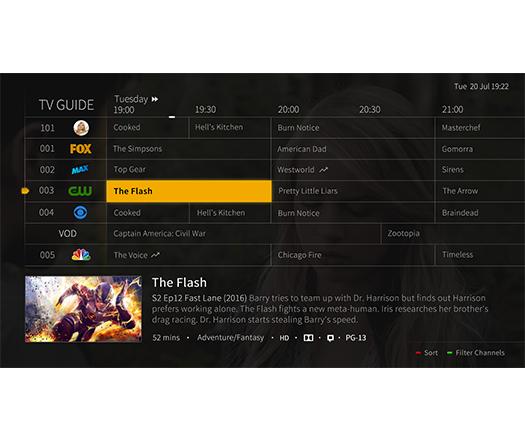
By Anthony Smith-Chaigneau, Senior Product Marketing Director, NAGRA
A pay-TV service provider's to-do list isn't the most simple, but it is at least short. They need to accomplish just three things in their service offering: increase average revenue per user (ARPU), maximise operator efficiency, and improve customer satisfaction. In the coming years, that last objective in particular may prove the most challenging.
Fortunately, there is an effective tool to help measure customer loyalty and satisfaction: the Net Promoter Score (NPS).
NPS measures loyalty between the provider and consumer, providing a score between 0 and 10 based on just one question: “how likely is it that you would recommend our service to a friend or colleague?” With extra feedback, providers can then work to improve their service and encourage customer loyalty.
NPS is, therefore, a key component that pay-TV operators and their vendor partners have to consider when developing solutions in improving user experience. A provider's NPS should influence every decision they make – not least when it comes to user interface (UI).
UI, after all, is the first touchpoint for users. It's the determining factor in how users find (or fail to find) the content they want, how happy overall they are with the service and, if they’re not, how likely they are to churn. Unfortunately, there is no universal UI that will ensure all users remain loyal to a provider. Different UIs appeal to different people.
The traditional electronic programme guide (EPG) format, for example, tends to suit older generations. On the other hand, Apple's app revolution has meant younger generations are more inclined to prefer an app-based UI. And let's not forget, both of these user types are likely to live in the same household and operate the same TV remote.
If providers don't get the balance right, they should be prepared to rectify the situation on demand – just ask Sling TV. But it doesn't stop there. Viewing habits differ by generation, too. The kinds of content different generations consume varies, as are they ways they access it.
Ultimately, we live in a converged media landscape, where the average TV gives people access to multiple apps, VOD services and linear broadcasting all at once. UIs need to bring all these elements together seamlessly and be a frictionless aspect of the main driver – a great content offering.
A provider's UI also needs to reflect those differences in preference and cater to everyone's needs. Otherwise they face backlash, or worse still, people will simply switch to another service.
A combination of UI and a great content offering holds the key to ensuring customers are satisfied and that they remain loyal. And so, customer loyalty and satisfaction – reflected in their NPS result – should always be central to how a provider's pay-TV service works, looks and feels. In today’s CE-centric world of modern devices and a need for instant access, UI will prove the difference between consumers staying tuned and switching off.
If you wish to know more about the solutions and services we offer to help service providers deliver to their consumers a compelling, frictionless access to all content on all screens, please contact us at [email protected].
